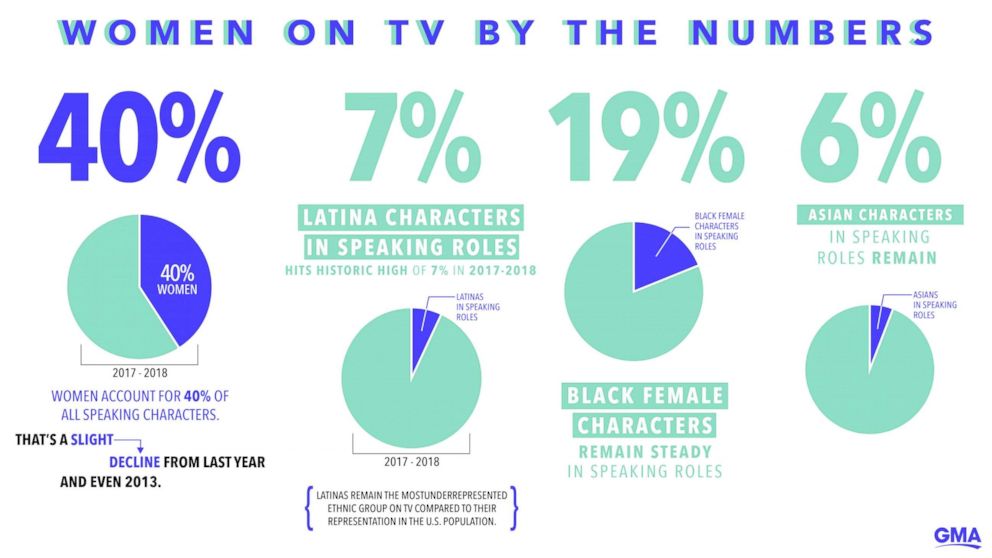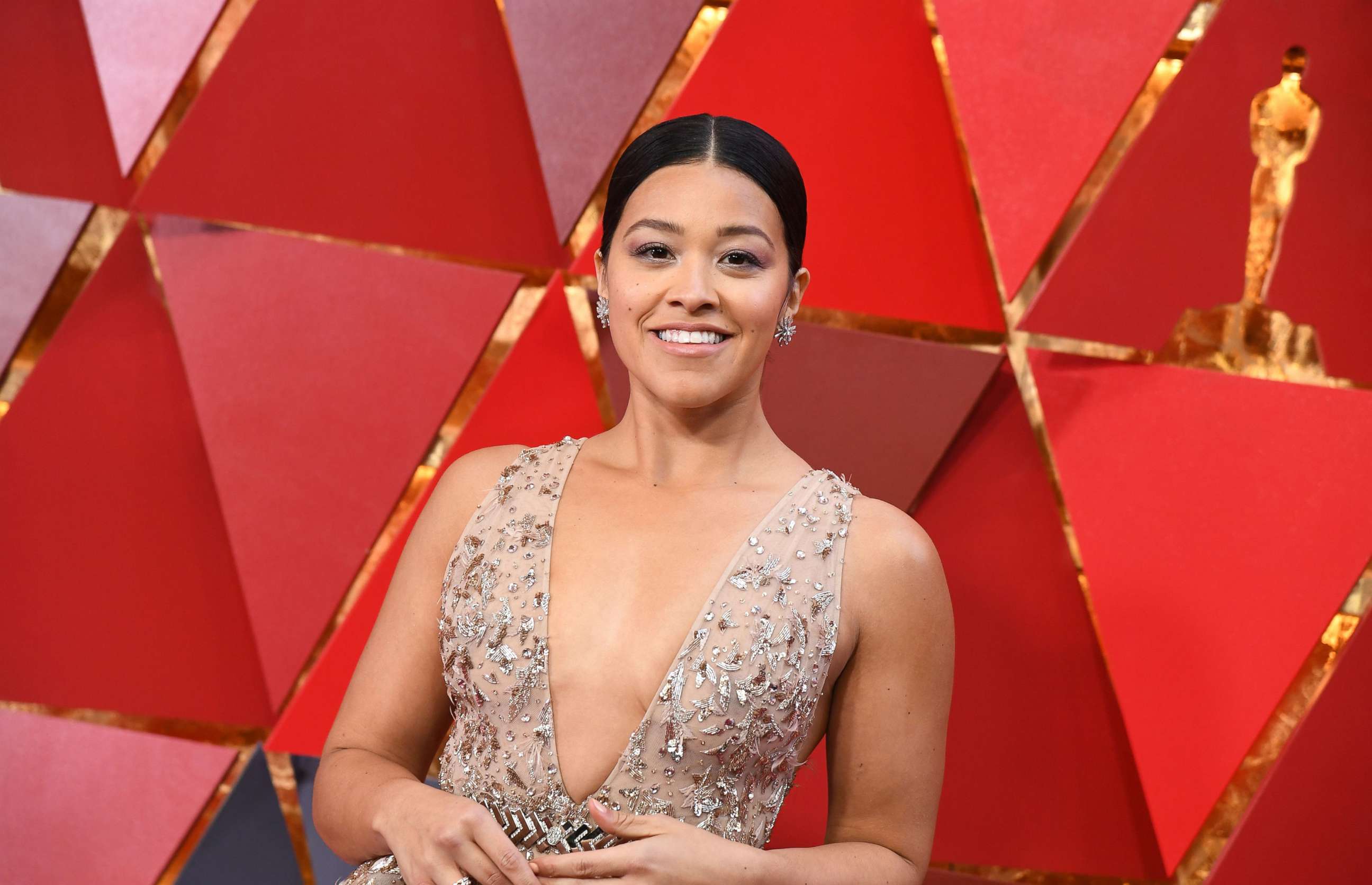Speaking roles for women on TV decline, but Latina roles hit new all-time high, study says
A study breaks down women in front of and behind the camera.
A new study examining women in TV reveals a major milestone for Latina actresses over the past year, while showing some troubling data regarding women overall in front of and behind the camera.
According to the Center for the Study of Women in Television & Film at San Diego State University, Latinas in speaking roles are at an all-time high at 7 percent from 2017 to 2018, while women in speaking roles overall have slightly declined at 40 percent, which is hardly equality compared to the men.
The boost for Latina characters actually went up a great deal from 5 percent last year, but they still remain the most underrepresented group compared to their population in the U.S.
Black and Asian women remained steady in the study at 19 and 6 percent, respectively in speaking roles on TV.

Overall the breakdown regarding race for women on TV is:
- 67 percent - White
- 19 percent - Black
- 7 percent - Latina
- 6 percent - Asian
- 1 percent - Other
The study is part of more than two decades worth of tracking this kind of data in an effort titled "Boxed In."
"The study examines dramas, comedies, and reality programs appearing on broadcast networks, basic and premium cable channels, and streaming services," the center reports. It tracked 4,833 characters and 5,195 behind-the-scenes credits overall.

The report also broke the data down into a more granular level, citing that further discrepancies between genders.
"Regardless of platform, male characters remain more likely than females to be identified by their occupational status, and to be seen at work, actually working," the report says.
What this means is 76 percent of male characters had "identifiable" jobs, while only 63 percent of women could make that claim.

Women did top the men in a few categories like "more likely than males to play personal life-oriented roles" like "wife and mother."
Finally, the study took a look behind the scenes, as well, and claims "women comprised 27 percent of all creators, directors, writers, producers, executive producers, editors, and directors of photography working on broadcast network, cable, and streaming programs," which is also down 1 percent from last year.
A further breakdown of this data shows that the 27 percent comes from women comprising:
- 40 percent - Producers
- 26 percent - Executive producers
- 25 percent - Writers
- 24 percent - Editors
- 22 percent - Creators
- 17 percent - Directors
- 3 percent - Directors of photography
For the full study, head over to the Center for the Study of Women in Television & Film at San Diego State University.




